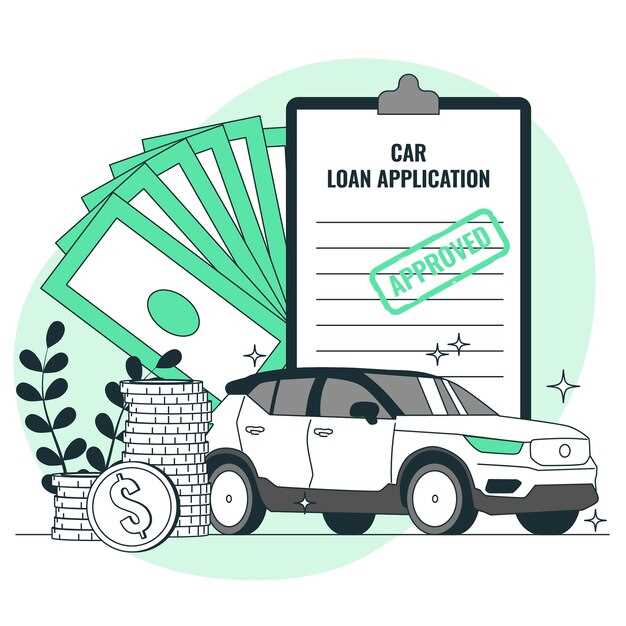
Refinancing a vehicle loan can be a savvy financial move, especially when it comes to securing better terms that align with your current budget and financial goals. By taking the time to refinance, borrowers can often reduce their monthly payments, lower their interest rates, or change the loan term to fit their needs. Understanding the intricacies of refinancing is essential for making informed decisions that can lead to substantial savings over time.
One of the first steps in the refinancing process is to assess your current loan terms. Analyzing your interest rate, remaining balance, and overall payment schedule can help you determine if refinancing is beneficial. If market rates have dropped since you took out your original loan, or if your credit score has improved, you may be able to secure more favorable terms. This initial assessment lays the foundation for a successful refinancing strategy that can enhance your financial health.
Additionally, it is crucial to shop around and compare offers from various lenders. Each financial institution may provide different rates and terms, and finding the right deal can make all the difference. Armed with knowledge and a clear picture of your financial situation, you can move forward confidently, knowing that you are taking steps towards optimizing your vehicle loan through refinancing.
Assessing Your Current Loan Terms for Refinancing Opportunities

Before embarking on the refinancing process, it is crucial to evaluate your current loan terms thoroughly. Understanding these terms will not only help you identify potential advantages but also inform your decision-making as you seek better financing options.
Start by reviewing the interest rate on your existing loan. If market rates have decreased since you originally financed your vehicle, you might find yourself eligible for a lower rate, which could significantly reduce your monthly payments.
Next, assess the remaining balance and the time left on your loan. Calculate how many months you have until the loan is paid off and the total interest paid thus far. This information is essential in determining whether refinancing can save you money in the long run.
Additionally, take note of any fees associated with your current loan. Some loans come with prepayment penalties, which could negate any savings from refinancing. Understanding these fees will help you determine the overall cost implications of moving forward with a new loan.
Consider the loan terms themselves. Look for features such as flexible payment schedules or options for deferment. If your current loan lacks the flexibility you need, refinancing may provide an opportunity to secure more favorable terms that align better with your financial situation.
Lastly, examine your credit score. If it has improved since you first obtained your loan, you may qualify for better terms now. Lenders often provide more attractive conditions to borrowers with strong credit profiles, making refinancing a feasible option for those who have worked on their credit health.
In summary, a comprehensive assessment of your current loan terms, including interest rates, remaining balance, associated fees, loan features, and credit status, will empower you to make informed decisions regarding refinancing. This strategic approach will ultimately aid you in securing a loan that better fits your financial needs.
Calculating Potential Savings: Interest Rates and Loan Duration
When considering refinancing your vehicle loan, understanding how interest rates and loan duration impact your potential savings is crucial. The terms of your current loan can heavily influence your financial outcome when you decide to refinance.
The first factor to evaluate is the interest rate. A lower interest rate can significantly reduce your monthly payments and the total amount of interest paid over the life of the loan. For instance, if you currently have a loan with an interest rate of 6% and you refinance to a new rate of 4%, this 2% difference can lead to substantial savings. To calculate your potential savings, compare your current monthly payment with the new payment based on the refinanced rate.
Next, consider the loan duration. Shortening the term of your loan can save you money on interest payments, even if the interest rate remains the same. However, while this may lead to higher monthly payments, it can result in paying off the loan faster, yielding a lower overall cost. For example, moving from a 60-month loan to a 36-month loan will typically increase your monthly payment but will decrease the total interest paid.
To calculate your total savings, use the formula:
Total Savings = (Current Monthly Payment – New Monthly Payment) x Number of Payments Remaining
By adjusting both the interest rate and the loan duration, you can create a strategy that aligns with your financial goals. It is essential to analyze both options and use financial tools or calculators available online to help determine the best course of action. Each decision should be weighted to ensure maximum savings when refinancing your vehicle loan.
Choosing the Right Lender for Your Vehicle Loan Refinance

When considering a vehicle loan refinance, selecting the right lender is crucial to securing favorable terms and lower monthly payments. Start by comparing interest rates offered by various lenders. A lower interest rate can significantly reduce your overall payment amount, impacting the total cost of the loan.
Additionally, assess the lender’s reputation and customer service record. Reading reviews and seeking recommendations can help identify lenders with a history of integrity and professionalism. A responsive lender will enhance the refinancing experience, making the process smoother and more transparent.
Examine the terms of each loan offer, including the length of the loan, prepayment penalties, and any fees associated with refinancing. Some lenders may offer attractive rates but include hidden fees that can offset potential savings. Understanding the complete picture will help you avoid costly surprises down the road.
Consider the flexibility of the lender. Some institutions may provide more adaptable payment options, which can be invaluable if your financial situation changes. A lender willing to accommodate your needs will offer peace of mind as you navigate your refinancing journey.
Finally, check if the lender has specific programs for vehicle refinancing. Some lenders cater specifically to this market and may offer incentives for certain vehicles or borrowers. Utilizing a lender who specializes in vehicle loans can lead to better terms and conditions tailored to your situation.



